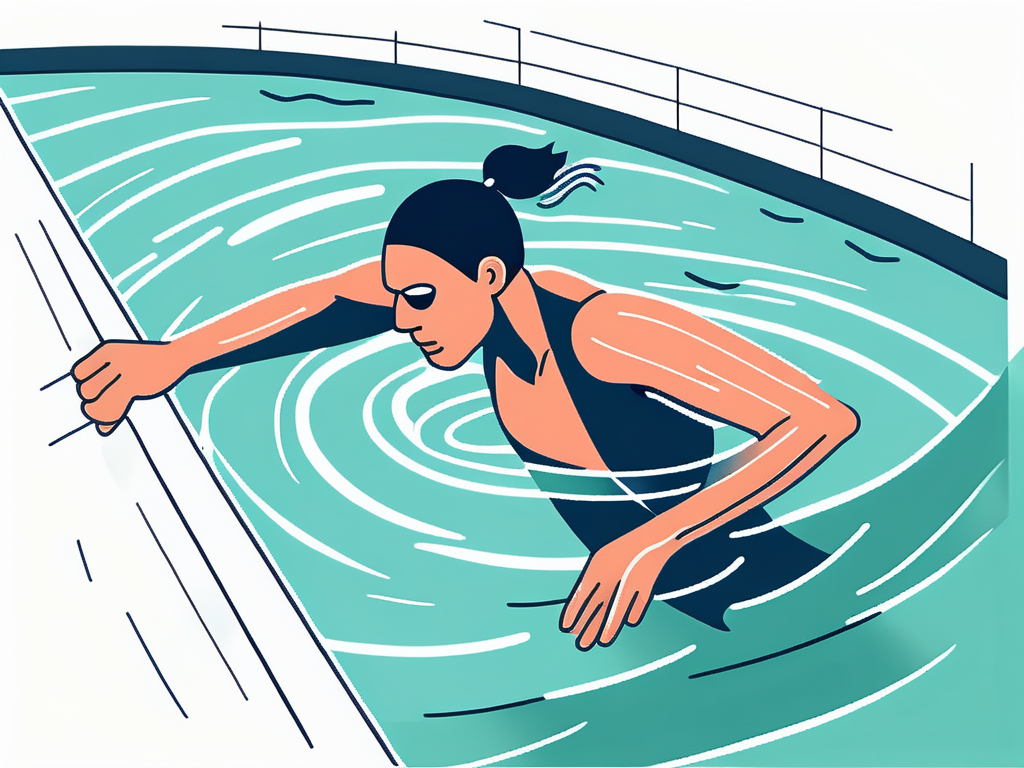The Ultimate Guide to Creating a Swim Training Plan and Achieving Your Goals
When it comes to swimming, having a solid training plan is crucial to achieving your goals. Whether you're a beginner looking to improve your technique or an experienced swimmer aiming to increase your speed and endurance, a well-designed training plan can make all the difference. In this ultimate guide, we'll explore the ins and outs of creating a swim training plan that will help you reach your full potential in the water.
Boost Your Motivation with Goal Setting
Setting goals is a powerful tool for boosting motivation and staying focused on your swim training. By having a clear objective in mind, you'll be more likely to push yourself during each session and maintain consistency. But what is the psychology behind setting fitness goals? Understanding the underlying principles can help you craft effective, actionable goals that will propel you forward.
The Psychology Behind Setting Fitness Goals
When you set a goal, you activate the subconscious part of your brain known as the reticular activating system (RAS). Your RAS then starts to filter information and opportunities that align with your goal, making you more aware of them. This increased awareness can fuel your motivation and help you stay on track.
Moreover, setting goals provides a sense of direction and purpose. It gives you a target to strive for and a benchmark to measure your progress against. This sense of purpose can be incredibly powerful, especially during challenging moments when you may feel like giving up. With a clear goal in mind, you can remind yourself why you started and stay committed to your swim training plan.
Additionally, setting specific and measurable goals can enhance your overall performance. When you have a clear target, such as improving your lap time by 10 seconds or increasing your endurance by swimming an extra 100 meters, you can track your progress more effectively. This tracking not only helps you stay motivated but also allows you to celebrate small victories along the way, boosting your confidence and reinforcing your commitment to your training.
Furthermore, the act of setting goals can stimulate your creativity and problem-solving skills. As you brainstorm different ways to achieve your objectives, you engage your brain in strategic thinking and planning. This mental exercise not only sharpens your focus on your swim training but also cultivates a proactive mindset that can be applied to other areas of your life.
Overcoming Plateaus: How Goal Setting Can Help
One of the greatest challenges in fitness training is overcoming plateaus. These periods of stagnation can be frustrating and demotivating, but they are a natural part of the process. However, goal setting can provide the necessary push to break through these plateaus and continue progressing towards your desired outcomes.

Setting specific, measurable, achievable, relevant, and time-bound (SMART) goals is a proven strategy to help individuals stay focused and motivated during their fitness journey. By breaking down larger goals into smaller, manageable steps, you can track your progress more effectively and celebrate each milestone achieved. This approach not only keeps you accountable but also boosts your confidence as you witness tangible results along the way.
Strategies to Break Through Fitness Plateaus
When faced with a plateau, it's important to reassess your goals and make appropriate adjustments. This might include changing up your training routine, trying new swimming techniques, or focusing on different aspects of your performance. Additionally, setting smaller, intermediary goals can help you overcome plateaus by providing a sense of accomplishment along the way.
Furthermore, incorporating variety into your workouts can prevent plateaus from occurring in the first place. Cross-training, which involves engaging in different types of physical activities such as cycling, yoga, or weightlifting, not only challenges your body in new ways but also helps prevent overuse injuries. Mixing up your routine not only keeps things exciting but also ensures that your muscles are constantly adapting and growing stronger.
The Power of Setting Specific Fitness Goals
While setting broad, general goals can be a good starting point, narrowing down your objectives can significantly enhance your training plan. Specific goals give you a clear target to work towards, allowing you to break down your progress into manageable steps. By setting specific goals, you can create more focused training sessions and track your improvements more effectively.

When you set specific fitness goals, you are essentially creating a roadmap for your fitness journey. Imagine each goal as a milestone on this map, guiding you towards your ultimate destination of improved health and fitness. These specific objectives act as checkpoints that help you stay on course and measure your progress along the way. By breaking down your larger fitness aspirations into smaller, more defined goals, you are better able to stay motivated and focused throughout your training.
Tips for Setting Achievable Fitness Goals:
- Be specific: Instead of setting a goal like "improve my swim technique," aim for something more specific like "reduce drag during freestyle stroke by improving body position."
- Make them measurable: Ensure your goals can be objectively measured, such as completing a certain distance in a specific time or achieving a specific stroke count per lap.
- Set realistic targets: It's important to set goals that are challenging but achievable. Be honest with yourself about your current abilities and set goals that push you outside your comfort zone without overwhelming you.
- Set deadlines: Give yourself a timeframe to work within. By setting deadlines, you create a sense of urgency and prevent procrastination.
- Stay accountable: Share your goals with a training partner, coach, or supportive community. This will help keep you accountable and provide additional motivation and support.
Tracking Your Fitness Journey: Why It Matters
Tracking your progress is an essential part of any swim training plan. Not only does it help you stay motivated and celebrate your achievements, but it also allows you to identify areas that may need improvement. Keeping a record of your fitness journey can provide valuable insights into your performance and help you set realistic goals for the future.
Moreover, tracking your progress can help you stay accountable and committed to your swim training regimen. By monitoring your improvements over time, you can see the fruits of your hard work and dedication, which can be incredibly rewarding and encouraging.
The Best Tools for Monitoring Fitness Progress
- Swim tracker apps: There are numerous mobile apps specifically designed for swimmers, allowing you to track distance, time, stroke count, and more. Some popular options include SwimIO, MySwimPro, and Swim.com. These apps often come with features such as goal setting, workout planning, and community support to enhance your tracking experience.
- Smartwatches and fitness trackers: These wearable devices can provide valuable insights into your swimming performance, including heart rate, stroke analysis, and distance covered. With advancements in technology, smartwatches can now offer real-time feedback during your swim sessions, helping you make immediate adjustments to improve your performance.
- Training logs and journals: Good old pen and paper can still be effective tools for tracking your progress. Keep a log of your workouts, noting important details such as distance, duration, and perceived effort. This hands-on approach allows for a more personalized tracking experience and can serve as a tangible reminder of your progress.
- Video analysis: Recording your swimming sessions and analyzing the footage can provide valuable visual feedback. It allows you to spot any technical flaws or inefficiencies in your stroke technique, helping you fine-tune your performance. Video analysis can be a game-changer in improving your swimming skills, as it offers a different perspective that may not be apparent during your actual swim sessions.
Achieve Peak Fitness by Setting and Reaching Goals
By incorporating goal setting into your swim training plan, you can take your performance to new heights. Embrace the power of specific goals, track your progress, and stay motivated even during challenging times. With consistency, determination, and a well-crafted training plan, you'll be well on your way to achieving your swimming goals and realizing your full potential in the water.

Setting goals in swimming is not just about aiming for a specific time or distance. It's also about setting process-oriented goals that focus on improving technique, building endurance, and enhancing mental resilience. By breaking down your ultimate goal into smaller, manageable steps, you can create a roadmap for success that keeps you engaged and committed to your training.
Furthermore, goal setting in swimming can extend beyond the individual level to encompass team goals and collaborative achievements. Working towards a common objective with your training partners can foster a sense of camaraderie, support, and shared accomplishment. Whether it's pushing each other during practice sets or celebrating milestones together, the collective pursuit of excellence can elevate everyone's performance and create a positive training environment.






